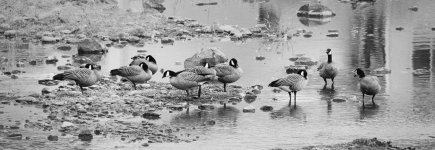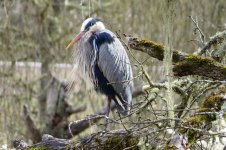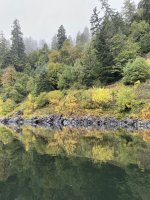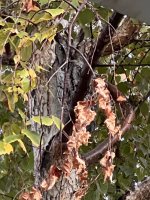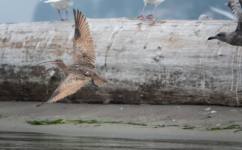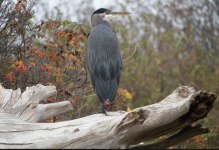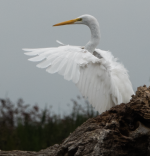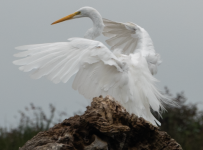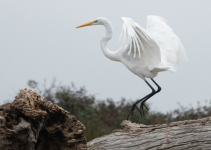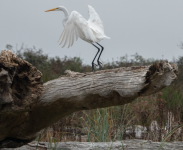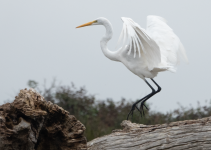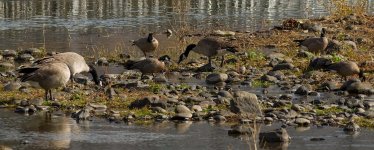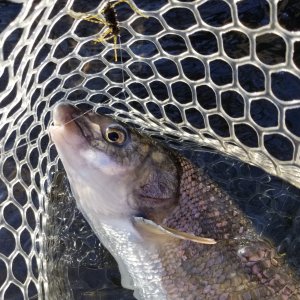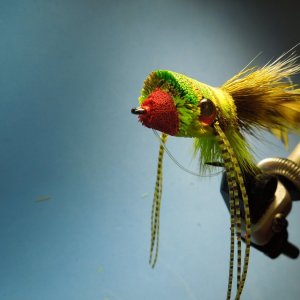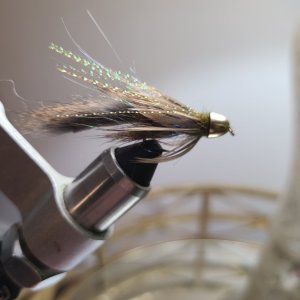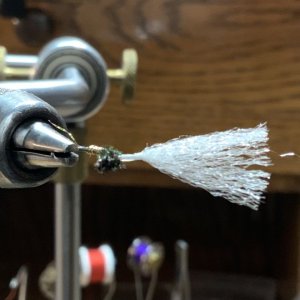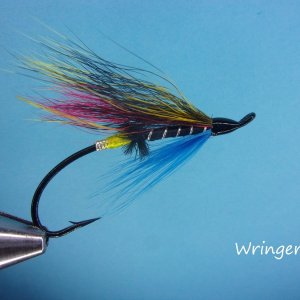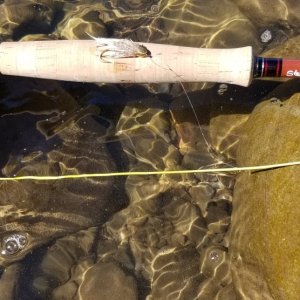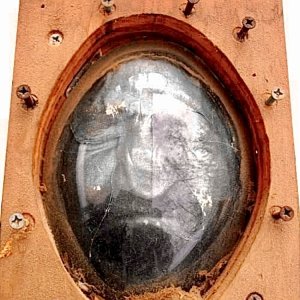Navigation
Install the app
How to install the app on iOS
Follow along with the video below to see how to install our site as a web app on your home screen.
Note: This feature may not be available in some browsers.
More options
Style variation
You are using an out of date browser. It may not display this or other websites correctly.
You should upgrade or use an alternative browser.
You should upgrade or use an alternative browser.
Got any bird pics?
- Thread starter Wadin' Boot
- Start date
When saw the picture, I thought cacklers. Very nice! Had a nice group in the Kent valley a few years back.
BriGuy
Life of the Party
Hey @Gyrfalcon22, we haven't seen you post any new bird pics in a while. Everything okay?
Buzzy
I prefer to call them strike indicators.
You share some absolutely wonderful photographs! (Look at that hackle!)
In my opinion, among North American ducks, woody drakes have the most outrageous breeding plumage (with harlequins in second place).
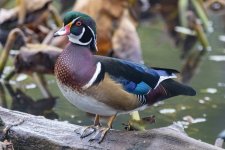
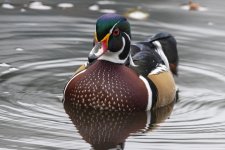
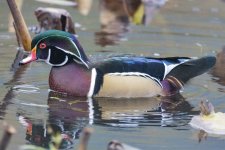
The woody hens, as is true for most ducks, are far drabber (sexual dimorphism).
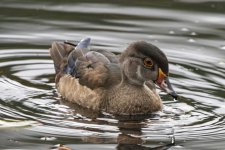
In geese and swans where males do play a role in bringing up the goslings/cygnets, there are very small differences if any between males and females. However, drake ducks have no role in bringing up the ducklings – sperm donors only; the drab colorations of the hens are likely to be better camouflage when incubating their eggs and / guiding protecting their ducklings.
The accepted (and supported) evolutionary explanation for the dimorphic coloration / trait difference is sexual selection. Females preferentially mate with males that have particular coloration patterns / characteristics. Sexual selection was first proposed by Darwin to explain the elaborate tails of male peacocks and the massive horns of the extinct Irish elk; in Darwin’s mind, it was hard to see how natural selection (evolutionary changes that improved survival, growth, and/or reproductive success) would lead the development of these excessive structures. But if these features improve a male’s odds of outcompeting other males for females or if females prefer to mate with males with these features, they would become more common in the species.
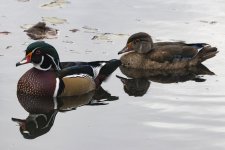
While there are multiple mechanisms (non-exclusive) proposed for sexual selection, the two strongest are the “sexy-son” hypothesis and “handicap” hypothesis proposed by Zahavi. The essence of the “sexy-son” hypothesis is that females should chose to mate with males who have the characteristics that are preferred by females of the species. Her sons will inherit the same desirable traits as their father and be more successful in mating, a case of a positive feedback loop. Dawkins has proposed that the genes for the male characteristics and female preference can become linked over time.
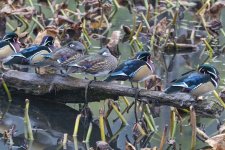
Under the handicap hypothesis, these excessive features (e.g., long tails, massive horns, gaudy colorations) are “true” reflections of the quality of the male’s genes (honest signaling). After all, for the duck hen, that’s all she’s getting out of mating with any particular male. If a male has enough resources to produce such non-functional characteristics and to survive to reproduce, the package of genes that he has to offer must be really good. He can do this with “one-hand-tied behind-his-back” so to speak.
Steve



The woody hens, as is true for most ducks, are far drabber (sexual dimorphism).

In geese and swans where males do play a role in bringing up the goslings/cygnets, there are very small differences if any between males and females. However, drake ducks have no role in bringing up the ducklings – sperm donors only; the drab colorations of the hens are likely to be better camouflage when incubating their eggs and / guiding protecting their ducklings.
The accepted (and supported) evolutionary explanation for the dimorphic coloration / trait difference is sexual selection. Females preferentially mate with males that have particular coloration patterns / characteristics. Sexual selection was first proposed by Darwin to explain the elaborate tails of male peacocks and the massive horns of the extinct Irish elk; in Darwin’s mind, it was hard to see how natural selection (evolutionary changes that improved survival, growth, and/or reproductive success) would lead the development of these excessive structures. But if these features improve a male’s odds of outcompeting other males for females or if females prefer to mate with males with these features, they would become more common in the species.

While there are multiple mechanisms (non-exclusive) proposed for sexual selection, the two strongest are the “sexy-son” hypothesis and “handicap” hypothesis proposed by Zahavi. The essence of the “sexy-son” hypothesis is that females should chose to mate with males who have the characteristics that are preferred by females of the species. Her sons will inherit the same desirable traits as their father and be more successful in mating, a case of a positive feedback loop. Dawkins has proposed that the genes for the male characteristics and female preference can become linked over time.

Under the handicap hypothesis, these excessive features (e.g., long tails, massive horns, gaudy colorations) are “true” reflections of the quality of the male’s genes (honest signaling). After all, for the duck hen, that’s all she’s getting out of mating with any particular male. If a male has enough resources to produce such non-functional characteristics and to survive to reproduce, the package of genes that he has to offer must be really good. He can do this with “one-hand-tied behind-his-back” so to speak.
Steve
Thank you.You share some absolutely wonderful photographs! (Look at that hackle!)
I am sure that your comment about the hackle is tongue-in-cheek, the history of the plume trade and efforts to outlaw it are examples of some of the first effective conservation laws in the U.S. and outlawing the hunt was one of the drivers of the formation of the Audubon Society. There is an interesting summary here.You share some absolutely wonderful photographs! (Look at that hackle!)
Steve
Buzzy
I prefer to call them strike indicators.
Steve - Yes, my comment was tongue in cheek. Our sport of fly fishing and fly tying has, in years past, probably been cause for some of that harvest of 50 or more species of (North American) birds..... Thanks for the link, very interesting.I am sure that your comment about the hackle is tongue-in-cheek, the history of the plume trade and efforts to outlaw it are examples of some of the first effective conservation laws in the U.S. and outlawing the hunt was one of the drivers of the formation of the Audubon Society. There is an interesting summary here.
Steve
Audubon wars not the great bird savior he is made out to be.
Brian in OR.
Steelhead
Jim F.
Still a Genuine Montana Fossil
The nerve. Must think he's a king or something . . .Someone is in my fishing spot.
They were a little far out for good images but here are some Semidi Island Aleutian cackling geese at Nestucca Bay NWR. The refuge winters 100% of this sub-population while the remaining Aleutians head to the California north coast and Sacramento/San Joaquin Delta. Hopefully I'll get better photos a bit later this fall/winter.
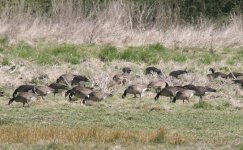
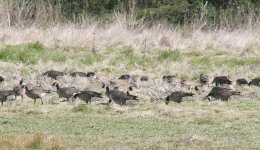


Last edited:
There was a group of cacklers in the Kent Valley a few years back.
Great blue herons are iconic birds. But what really impresses me is how flexible (and effective) they are as hunters. Nothing either in the shallow water or on land that they can swallow is safe. A few weeks ago, I watched one heron use its massive beak like chopsticks to pluck tiny baitfish from the small pond in front of the Visitor Center at the Billie Frank Jr. Nisqually National Wildlife Refuge.
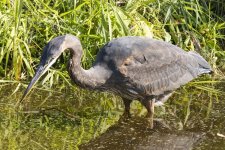
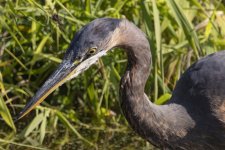
The same day, I saw another great blue heron swallow a massive garter snake that it had captured from the grasslands.
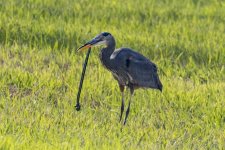
Last week, another great blue heron speared a staghorn sculpin in McAllister Creek, flew it into shore, and beat it into submission before swallowing it whole, spines and all. I’ve seen a great blue heron swallow a starry flounder from McAllister Creek after tearing off its head
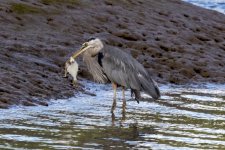
and another spear and wolf down a rodent from the field at Ridgefield National Wildlife Refuge.
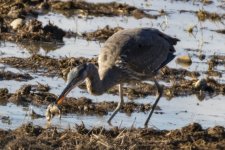
Steve


The same day, I saw another great blue heron swallow a massive garter snake that it had captured from the grasslands.

Last week, another great blue heron speared a staghorn sculpin in McAllister Creek, flew it into shore, and beat it into submission before swallowing it whole, spines and all. I’ve seen a great blue heron swallow a starry flounder from McAllister Creek after tearing off its head

and another spear and wolf down a rodent from the field at Ridgefield National Wildlife Refuge.

Steve

